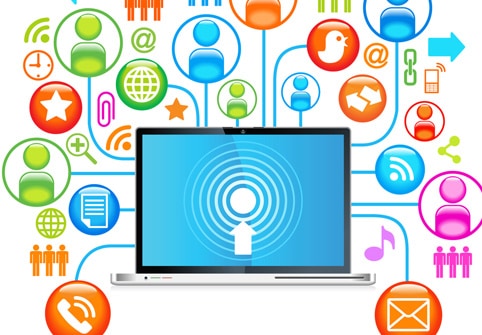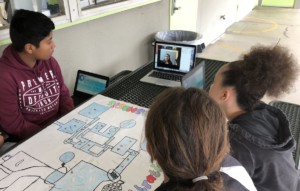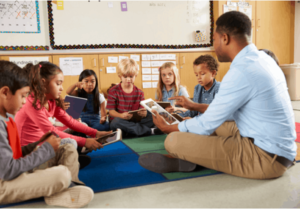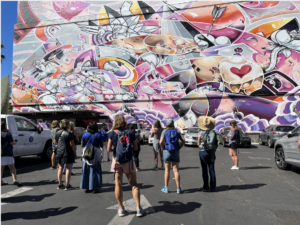At #ISTE2014, Process Over Product Prevails

If you listen closely to the conversations taking place at ISTE2014, you will hear educators talking about BYOD, 1:1 initiatives, maker education, and more. But whether in a formal session or a chance meeting in a corridor at the Georgia World Congress Center, one common theme seems to connect what everyone is talking about. And that theme is an emphasis on process.
“This is not about technology; it’s about relationships and learning” said George Couros, Divisional Principal in Edmonton, Canada. Though Couros made this claim to attendees in his session, Conquering the Myths of Technology, the atmosphere at this year’s ISTE conference seems to reflect this idea generally.
From successful implementation of technology in the classroom to navigating this year’s conference itself, process before product prevails.
“The biggest shift for educators using technology is not skill set; it’s mindset,” added Couros.
Apparent by the interactions of conference-goers is a focus on continuing to develop the correct mindset to support blended learning in their respective positions as stakeholders in education, whether that be as a teacher, administrator, or policymaker.
“The beginning might be about the tools,” said EDcamp Founder and author of Professional Learning in the Digital Age, Kristen Swanson; “But the end that we have in mind must always be about the learning. We really need to focus on pedagogy, because it is pedagogy that is really going to move learning forward.”
Inevitably, in the process of marrying pedagogy with technology, talk of the SAMR (Substitution, Augmentation, Modification, Redefinition) model of technology integration must come up. And as it does, educators need to ask themselves, how is what you are doing with technology related to what you were doing before?
Ruben Puentedura, designer of the SAMR model, answered this question by encouraging teachers to leverage SAMR along with the Technological and Pedagogical Content Knowledge (TPACK) framework. Puentedura said, “TPACK helps transition [technology use] from the lower levels (Substitution and Augmentation) of SAMR to its upper levels (Modification and Redefinition). It’s here that technology allows for the creation of new task previously inconceived in the classroom.”
When asked how he helps his staff to initiate the process of sustainable technology integration at New Milford High School in New Jersey, principal Eric Sheninger said, “We focus on pedagogy first, technology second. The tools are just means to an end, so we really need to focus on those learning outcomes.” Sheninger continued, “Once you frame your learning outcome and you have a sound pedagogical lesson, then finding a tool to allow students to demonstrate mastery is a seamless fit.”
Denver kindergarten teacher Michelle Baldwin summarized this quite well when she said, “The process becomes the learning piece when less emphasis is placed on the end result and a grade.”
So, what do teachers at ISTE2014 need to help them embark on the process of learning how to leverage technology in their own blended learning practices?
Robert Tellgren Tweeted, “Time. The message that I keep hearing is that teachers need time to try things out in their classrooms.”
Regardless of how powerful of lessons educators may learn this at ISTE2014, without time, there’s no process. But then again, when process is framed by relationships and learning like it has been this year at the conference in Atlanta, educators at ISTE aren’t wasting one minute.






Christine Tomasino
Nice recap of your ISTE message. I am creating a new professional learning session for educational leaders called Nixing the Phrase Technology Integration in Today's Schools. I really believe this is holding us back and keeps the focus on the tools. We should not have visions for technology use but new learning possibilities because we have better and ubiquitous digital tools that allow for information access, communication, collaboration, etc. For the past 5 years I have been on a mission to wipe "technology integration" from our vocabulary. Tech coaches should be instructional coaches or 21st century learning specialists!